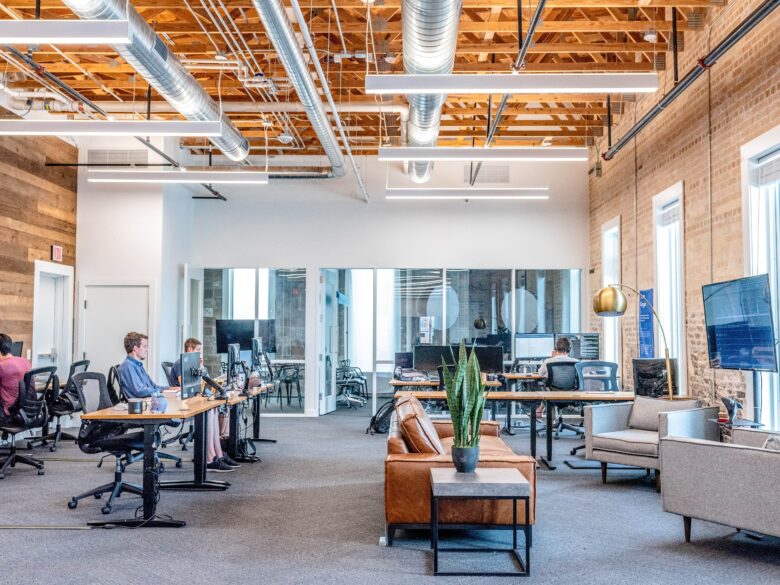
12 Oct 2022

Bringing new talent into your business is an exciting time as not only will it lift your workload but potentially bring work in! Having helped design studio’s build their teams for the last 16 years here is my experience of what works when sourcing and nurturing talent.
Writing a job description or job advert can be tedious. It’s easy to over generalise the role and assume you and the candidate know what you are looking for. Clarity is absolutely essential. Be very clear on the top three criteria you need from this hire e.g. do you need a specific software knowledge, certain project experience and someone who can confidently deliver drawing packs? If so, make sure this is detailed in the advert.
When you start receiving an influx of CV’s and portfolio’s it can be very easy to lose track of the key criteria and having these firmly in your mind will help in the first elimination process. In the advert ensure you mention the projects you are currently working on or have in the pipeline, and crucially discuss the culture of the working environment. This will help attract potential candidates and more often than not, these points are rarely mentioned!
Allocate time for interviews and guard it! Nothing puts an eager candidate off than an interview that has to be moved numerous times. It will dampen the momentum and leave room for uncertainty. Going back to the key criteria, if you are very keen to see technical drawings for example, ask the candidate to bring these along to the interview. It will save time in the long run.
Whether or not the candidate is successful, make sure the candidate walks away with a good impression of your company. As the saying goes, bad news travels quicker than good, this candidate could be excellent marketing for your company. By simply showing a genuine interest in their work, talking the candidate through your current projects and an open discussion of the working environment will mean they take a positive representation of your business.
At the second interview stage, certainly for junior and middle weight level placements, don’t be afraid to set the interior designer a brief for a mini-project that they will be required to complete and present at the next interview. This is a great way to give you an indication of their personal style, level of understanding and their presentation techniques.
Once you have invested your time in finding your talent ensure they are nurtured. Human beings thrive on learning new skills and being challenged. One of the most common reason’s candidates approach me looking for a new job is because they are bored in their job role as they are not being given enough responsibility.
Putting a mentoring scheme throughout the company can be a very beneficial way of allowing all levels of designers to help each other progress. (Juniors mentor the interns, mid -weights mentor the juniors and seniors mentor the- mid-weights). A mentor doesn’t manage the candidate on a day to day basis, but this allows for every level to be a role model and to demonstrate their working knowledge which gives the mentor a more fulfilling role and in turn for the candidate to have an extra layer of nurturing. In the past I’ve found mentors can be great at unlocking hidden talents within designers and can encourage them to really shine. You may have an interior designer that is a whizz on fly-through visuals or has a talent for graphic design that they do in their spare time but haven’t had the opportunity to show you.
Although yearly appraisals can be time consuming they are a great way to help you identify areas where training may be required and an opportunity to look back on what has been achieved by the candidate to date. In smaller companies, I find appraisals are rarely conducted which can be a costly mistake in the long term if you suddenly find the candidate wants to resign. Money is rarely the main motivation for someone looking to leave a company. Candidates want to feel valued, listened to and given the chance to shine. All of these points can easily be obtained with a strong company culture, appraisals and good values in the workplace.
Tips to approaching companies directly
Competition is high for jobs so attention to detail is paramount. A beautifully presented portfolio and CV goes a long way, even if you don’t have the exact project experience the company is looking for.
Always start by putting the most relevant projects to the company you are approaching to the top of your portfolio, in order to spark the hirers attention straight away. If you are sending your CV and portfolio to a company on a speculative basis, take an interest in what they do. In your introductory email perhaps congratulate them on a recent award or complement a specific project you admire that they have previously worked on.
CV’s are often the underdog’s to portfolio’s but they should be just as important; CV’s are a great tool for you to list the variety of project experience you have had to date especially if you haven’t included those projects in your portfolio. Companies often have a project in mind they are hiring for, so ensure you add as much detail about the projects as possible e.g. the size, value, project details, the type of building and your involvement.
File size / website link
Hiding a weblink to your portfolio of work in your CV or introductory email isn’t helpful when the employer is sifting through 100’s of applications, it may even mean it’s not viewed at all.
Always attach a sample portfolio in a pdf along with your CV that’s no bigger than 15MB and you can then direct them to your website for a fuller portfolio of work.
This article was published in the 2023 Interior Design Year Book https://flickread.com/edition/html/6305e45a5f640#1

06 Jul 2023

02 May 2023

20 Feb 2023